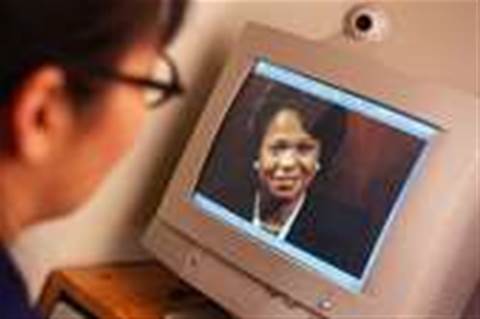Polycom recently showcased a range of solutions, from handsets and desktop offerings through to portable emergency video setups and boardroom video conferencing (VC) installations, at its new customer experience centre in Sydney.
Michael Chetner, country manager A/NZ at Polycom, said vertical markets such as banking, insurance, and mining industries will become increasingly hungry for VC capabilities - alongside established demand by verticals such as education, healthcare and government. He added that Polycom’s broad range of solutions have helped the company's growth in the region.
“We’ve grown 50 percent in headcount year on year. We’ve seen a massive uptake, from a Polycom perspective, in line with the growth in Asia Pacific and the region as a whole.”
Also present at the briefing, David Cannon, program manager Telecommunications at IDC Australia, claimed the VC market in Australia grew 35 percent last year. Discussing a recent IDC survey into the travel habits of Australian executives, Cannon drew out the differences between what IDC has dubbed "VC 1.0" - the first generation of video conferencing hardware and software - and the current "VC 2.0" range of solutions. He claimed that VC 2.0 has finally delivered on the promises made eight years ago.
“The hardware is significantly better than what it used to be. We’ve gone through the digital age which means that we’ve got high definition, which means that the codec and the software driving the codec is significantly better than what it used to be. It’s delivering that quality of service and the quality of experience that we actually need to be able to do this seamlessly and to be productive.”
According to Cannon, the large deployment of fibre optic cable around and between capital cities combined with ever-cheapening broadband has meant that VC is now within reach of an increasing number of businesses.
He added that as telecommunications bandwidth and the cost of hardware continues to drop, advances in technology mean that the problems that used to plague VC, such as frustration and productivity losses caused by jitter, echo and packet loss, have largely ceased to be an issue.
Cannon went on to add that rather than prohibitive cost, business culture is now the biggest inhibitor to en-masse adoption of video conferencing. Once conquered, Cannon said that VC 2.0 will offer significant gains, particularly around a healthy work-life balance, improved collaboration and a positive impact on the environment.
Polycom heralds the future of video conferencing
By
Mitchell Smith
on Jun 6, 2008 10:12AM
Got a news tip for our journalists? Share it with us anonymously here.
Partner Content

Channel faces AI-fuelled risk as partners lag on data resilience, Dicker Data summit told

Shure Microsoft Certified Audio for Teams Rooms

Tech Buying Budgets for SMBs on the Rise

Promoted Content
From Insight to Opportunity: How SMB Service Demand is Shaping the Next Growth Wave for Partners

Tech Data: Driving partner success in a digital-first economy


+drawn+by+George+Louis+Palmella+Busson+du+Maurier.jpg&h=113&w=200&c=1&s=1)
.jpg&h=113&w=200&c=1&s=1)
.jpg&h=113&w=200&c=1&s=1)



.jpg&w=100&c=1&s=0)
_(8).jpg&w=100&c=1&s=0)








.jpg&q=95&h=298&w=480&c=1&s=1)




